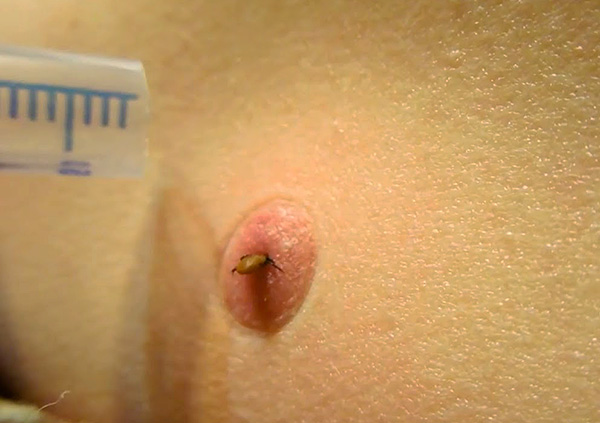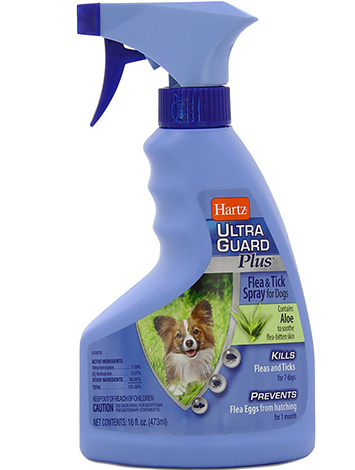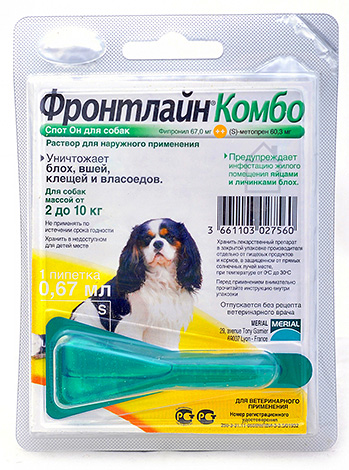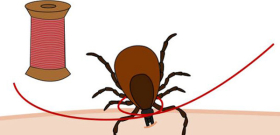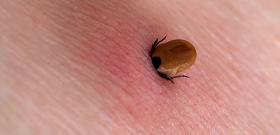
A tick that has stuck to a dog must be removed quickly - immediately after detection. It is the rapid elimination of the parasite that is one of the most important measures to protect the pet from possible infection with a tick infection. The sooner you manage to pull out the tick from the dog, the less likely it is that the pet will become infected with a dangerous disease.
When removing a tick, the main rule is this: the speed of this procedure is much more important than the correctness, technicality and painlessness of this process for the pet. Even if there are no special devices at hand, it is much safer to immediately remove the tick by simply grabbing it with your nails and tearing it off the skin than returning home for half an hour (or going to the veterinarian), making another ten minutes to make a device (clamp) and only then remove the bloodsucker. During this time, the tick will inject several more portions of saliva into the dog's blood, possibly infected with dangerous infections.
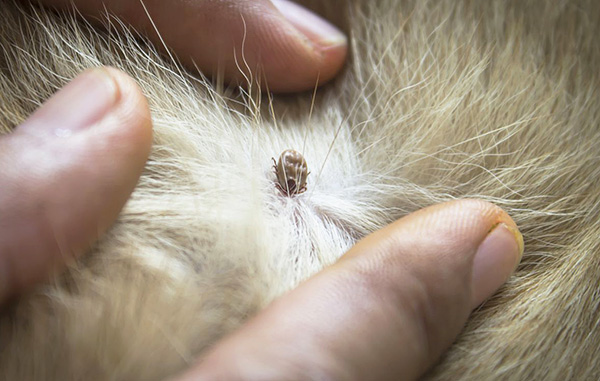
On a note
Even if, due to inexperience, the tick is not completely removed (this rarely happens, but sometimes the proboscis of the parasite does remain in the skin), this no longer poses a serious danger to the animal.
You definitely can’t wait until the tick unhooks itself. This can only happen when it is completely engorged with blood, and it can take 3 to 7 days for the parasite to saturate. In this case, if he is infected with an infection, he will almost certainly pass it on to the dog during this time.
Among the tick-borne infections, there are several that pose a mortal danger to the animal. For example, the most famous is piroplasmosis, which in some cases develops so rapidly that even experienced veterinarians do not have time to save the dog. And the longer the tick is on the animal, the more likely it is that the transmission of the infectious agent will occur in sufficient quantities to develop the disease.
What exactly should not be done with a tick stuck to a dog
There is no point in trying to get the tick to unhook itself (cauterize it, drip kerosene or oil on it). The biology of the parasite is such that until it is completely saturated, it will not unhook, even if it will cost him his life.
The photo below shows the "proboscis" (hypostome) of the parasite:
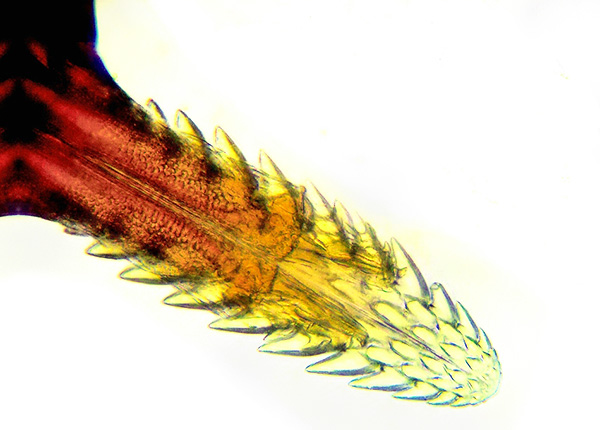
A big mistake of many dog breeders (and just people who have found a tick on themselves) is to believe that if the parasite is hurt or suffocated in a drop of oil, then it will try to unhook from the skin and run away.
This tactic works with other bloodsuckers - for example, with mosquitoes, bed bugs, horseflies. Indeed, if such a parasite in the process of bloodsucking feels threatened, then it stops feeding and tries to hide.
Ticks, on the other hand, cannot afford such a luxury for one simple reason: they are very inactive, and there is practically no chance for a particular individual to find another victim. ixodid ticks, clinging to dogs on the street, do not live near their victims and do not have the opportunity to eat every day, as bedbugs do. They are not able to fly several hundred meters, like mosquitoes or horseflies, to catch up with a dog or a person.
All they can do is climb grass stalks and wait for their chance, when an animal runs past the plant, touches the stalk, and the parasite has time to grab onto the hair during this time. Millions of ticks in the forests wait for their victims in this way all day long, and only a fraction of a percent of them wait and get the opportunity to feed on blood (others are eaten by predators or overtaken by dehydration).

Therefore, the evolutionary behavior of the ixodid tick has developed in such a way that, with any third-party irritants, it will stay in the skin and, rather, will die from injuries caused when trying to remove it, rather than fall off itself until it is completely saturated.
See also additional interesting details about how a tick bites and what processes take place.
Therefore, it makes no sense:
- Burn the parasite with matches, a lighter or a cigarette;
- Prick it with a needle;
- Tear off his legs;
- Moisten it with alcohol, vinegar, hydrogen peroxide or other folk remedies;
- Treat it with insecticides or acaricides.
It is also pointless to drip oil on the tick in the expectation that the film of this oil will deprive the tick of oxygen and it will try to detach itself from the skin in order to take a sip of air.
With all these actions, the tick will not do anything. As a result, he will die, and he will have to be removed anyway, but already dead. All such manipulations are wrong, because they do not lead to the main goal - to prevent infection of the dog with an infection.
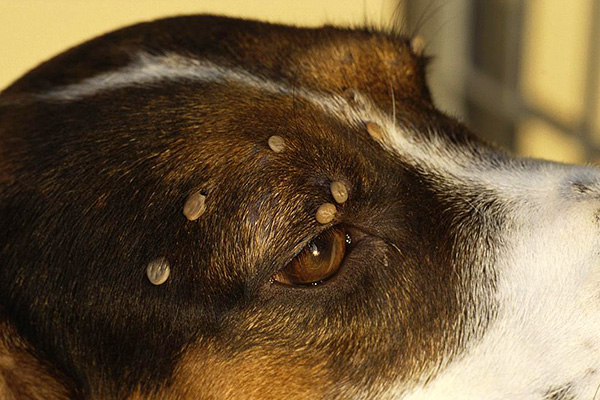
On a note
The so-called anti-tick resistance in various animals, including dogs, has been described and is being actively studied today. It lies in the fact that the body's immune system in response to tick bite begins to produce antibodies to the components of the parasite's saliva, and during subsequent tick attacks, these antibodies will either lead to the death of the parasites or to their inability to fully feed. In such cases, detachment of the tick to saturation is possible. However, you should not count on this in real conditions: you can never know exactly when the parasite will detach and, most importantly, whether it is infected with an infection.
Therefore, in any case, the sucked tick must be immediately removed from the dog. Right on the street during a walk, or at home - as soon as the parasite was discovered. Luckily, it's not that hard to do...
Proper parasite removal
Ideally, you can get a tick tick extractor (klescheder) - a special device that ensures the complete removal of the parasite without damaging and squeezing its body. These devices come in a variety of designs, are inexpensive, easy to use, very compact, and many dog owners always carry them with them on walks.
The photo below shows an example of a flat Tick Key pliers:
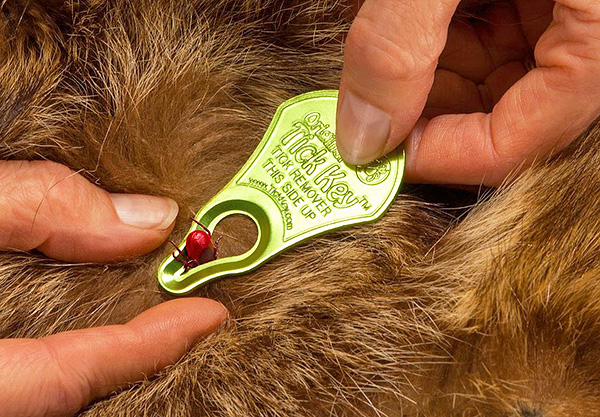
However, often such an extractor is not at hand. This does not mean that the tick should be left on the dog until the purchase of the device - you should do without it.
Let's look at the correct procedure for removing the parasite with and without the tick.
If you have an extractor at hand, then you need:
- Get the groove of the device under the body of the parasite. In this case, the idiosome enters the small recess of the extractor and is fixed there;
- The tickler is gently rotated several times around the axis of the tick's body (see also the article How to unscrew the tick and in which direction it should be twisted). The parasite begins to rotate with the device;
- After 2-3 revolutions, the bloodsucker usually falls out on its own.If this does not happen, you can try to easily pull it out with an extractor. If it does not give in, you need to make a few more full turns in the same direction.

As a rule, removing a tick with an extractor takes only 15-30 seconds. The advantage of using such a device is a guarantee that the head of the parasite does not come off the body and remain in the skin. In addition, compression of the body of the bloodsucker with extrusion of saliva into the wound is prevented, plus there is no direct contact between the person and the parasite (it can only be removed with a tool).
What to do if there is no tickeder at hand?
- We pick up the tick under the body with our nails, lightly fix it between the fingers, but try not to squeeze it;
- We turn in one direction, as far as the mobility of the hand allows without intercepting the parasite, then in the other;
- Smoothly, without jerks, we pull the parasite out of the skin.
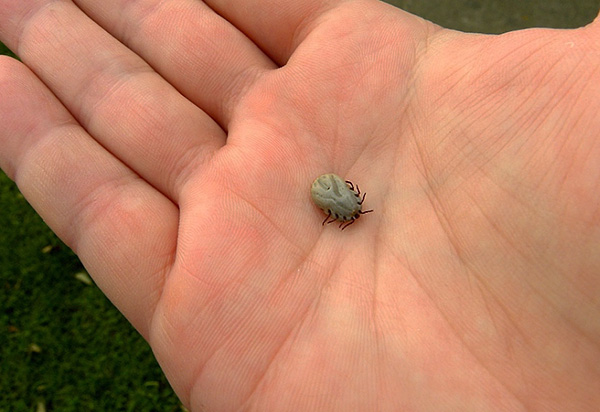
In the vast majority of cases, the tick is safely pulled out of the skin along with the gnathosoma and mouthparts. It very rarely happens that the body of the parasite breaks off from the head, which remains in the skin. It looks like a small black dot in the center of the bite. This situation is much less dangerous than a live tick that has entrenched itself in the skin, since there are no salivary glands in the gnathosoma itself and it no longer poses an infectious danger.
However, if the remaining head is not removed, the wound at the site of the bite may begin to fester. Therefore, as soon as the opportunity arises, the gnathosoma should be removed with a needle or tweezers in the same way as a splinter is removed.
On a note
And a large engorged tick, and a just sucked, still flat parasite, is equally easy to pull out of the dog's skin.The difference can only lie in the fact that on the second or third day of the parasite sucking, a focus of inflammation forms at the site of the bite (the inflammatory infiltrate is one of the sources of food for the parasite), and extracting a tick that has long been stuck can be more painful than a recently sucked one. Therefore, it happens that the dog will dodge in every possible way, run away and prevent the entrenched parasite from being pulled out.
In the absence of a special extractor, it can be quickly made with your own hands from improvised materials. For example:
- The tick can be removed by grasping it with a tightening loop on the thread, and then twisting the ends of the thread together. At a certain point, the twist will become so tight that the tick will begin to rotate with the thread and, after a few turns, will fall out of the dog's skin;
- The extractor can be made from an ordinary wooden stick. To do this, one end of it is cut at an acute angle to get a flat surface, and then a wedge-shaped groove is made in it, which will capture the body of the tick. Next, with a stick, like a handle, rotate the parasite until it falls out.
On a note
It is widely believed that the tick can be removed by attaching a syringe tube (with a cut end) to the skin, pressing it firmly and pulling on the plunger. Say, a vacuum is created, which "tears" the parasite from the skin. However, this method does not actually work.
The photo below shows that after trying to pull the tick out with a syringe, a bruise remained on the human skin, but the tick safely stayed here:
In the case of a dog, the situation is even more complicated, because due to the thick hair it is almost impossible to press the syringe to the skin so tightly that a vacuum forms in it.
In most cases, instead of making homemade ticks, it is much easier to quickly remove the parasite with your fingers.
What to do if the dog resists
When removing a tick, an unobvious, but sometimes serious problem often arises: it is difficult to keep the dog in order to carry out with it, albeit a quick, but requiring precision manipulation. As a rule, all this happens on a walk, when the animal wants to run, play, and in general is in an excited state. At the same time, it is difficult even to gently grab and remove the tick with your fingers, not to mention twisting it with a ticker or thread.

On a note
In some cases, an experienced dog already knows that removing the parasite is an unpleasant and painful procedure. Accordingly, the animal can break out with all its might.
There is no universal recommendation for calming a pet. Some dogs can be very diligent and follow the commands of the owner, even when they are in the game courage. In this case, it is enough to give a command, and the dog will be patient until the owner removes the parasite.
In most cases, the reception helps well when the dog is distracted by a treat that is rare for him.
If all else fails, it is necessary to hold the dog by force - this is a necessary measure. In any case, in order to completely remove the tick, the pet must be securely fixed for at least a few seconds.
First steps after parasite removal
A tick extracted from a dog's skin does not need to be immediately thrown into the grass - it must first be killed. At a minimum, this ensures that he definitely does not latch on to another dog or person and won't lay eggs, which will give rise to another hundred bloodsuckers.At the same time, crushing with fingers or nails is undesirable - if there are micro-scratches on the skin, the infected contents of the parasite can get into them.
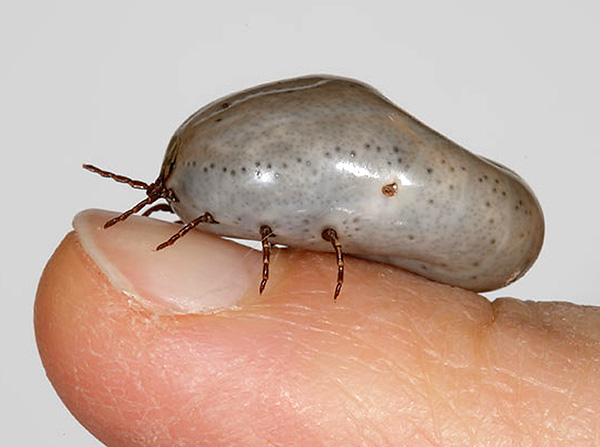
If one tick was found on a dog, then with a high probability there may be others on it (this is often forgotten, believing that everything is over). They must be searched for, and if found, removed. To do this, you need to carefully examine the areas on the animal where ticks stick most often:
- Ears;
- Lateral sides of the muzzle;
- Brows;
- Lower neck;
- Toes (especially between toes)
- Groin;
- Armpits.
Ticks rarely stick on the sides of the dog's body. Often, hundreds of ticks of different ages can be found in the ears of stray dogs, and there will not be a single one on the sides of the body.
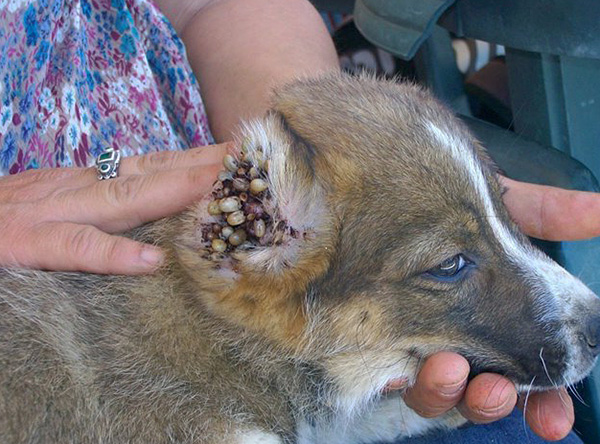
If other ticks are found on the dog, they must be immediately removed one at a time in the same way as the first one was pulled out. In the future, these places should be carefully checked regularly, preferably after each walk.
If there are a lot of parasites on the dog (under a hundred), then it is better to take it to the veterinarian right away. He will make an anesthetic injection and will be able to rid the pet of ticks as quickly as possible and with minimal discomfort for her.
Bite site treatment
In most cases, special treatment of tick bites in a dog is not required. If the parasite is removed on the street and the dog continues to play, he almost immediately forgets about the incident, even though the wound (or even the bump) from the bite may itch.
Sometimes a pet may try to lick the wound or comb it with its paw. If it is clear that the bite is bothering the animal, it can be smeared with some kind of soothing ointment.For this, Traumex, Beaphar Protective ointment for dog paw pads (it can be applied to any part of the animal's body), Trauma-Gel, Iruksovetin, Levomekol and others are suitable. In most cases, after a single treatment with ointment, the lump remaining at the site of the bite no longer bothers the dog and quickly resolves.
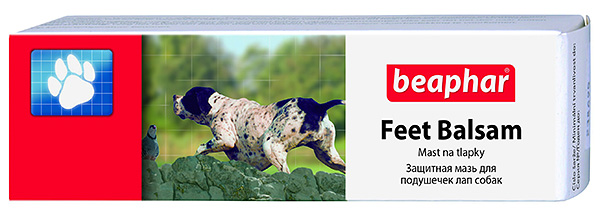
In rare cases, the wound at the site of the tick bite begins to become very inflamed and abscess. In such a situation, you should not try to open it at home on your own, just as you should not ignore it with the hope that it will “resolve itself”. With a clear abscess, it is better to show the dog to the veterinarian.
Do I need to take a tick for analysis?
A tick removed from a dog does not need to be carried for analysis. This practice is relevant for situations where a tick is removed from a person, and there is a risk of infection of the bitten with tick-borne encephalitis or borreliosis. In special laboratories in the body of a tick, they can detect the causative agent of the infection, or confirm its absence.
The causative agents of the most dangerous infections for dogs (piroplasmosis, for example) are not detected in laboratories. Theoretically, this is possible, but in practice, due to the lack of need and demand, laboratories do not have the appropriate tools, first of all, markers specific to babesias (causative agents of piroplasmosis). Dogs do not get tick-borne encephalitis.

Sometimes a frightened inexperienced dog breeder in a veterinary clinic is offered to donate blood from a dog that has just been bitten by a tick for analysis for piroplasmosis. This is an exclusively commercial move, useful only for the clinic itself.
In the first days after a tick bite, even if a dog is infected with piroplasmosis, it is impossible to detect babesia in its peripheral blood. Therefore, the analysis in any case will show a negative result. In many clinics that offer such a service, they are modestly silent about this, and the panicked dog owner does not even think about it. At the same time, the price of such a service can sometimes exceed 1500 rubles.
On a note
Piroplasmosis infection can be diagnosed by a blood test about 10-15 days after a tick bite. The incubation period of the disease is about the same. That is, the period when it makes sense to do the analysis approximately coincides with the period when the first symptoms of the disease should appear. For this reason, analysis may be required only if piroplasmosis has already developed.
What to do if the head of the parasite remains in the dog's skin
The mite gnathosoma (colloquially, “head”) remains very rare in the skin of a dog. This is due to the fact that most of the ticks that parasitize dogs in Russia do not create a cemented sheath in the skin when they bite, and also because the strength of adhesion of the oral organs of the parasite to the skin is less than the strength of the articulation of the gnathosoma with the idiosome.

Simply put, to tear the body of the tick from the head, you need to try. However, sometimes people succeed.
As a rule, a severed head is clearly visible in the skin of a dog. It is black in color and looks like a “thorn” sticking out of the wound. Sometimes in thick dog hair it can be overlooked, but usually after pulling out the tick, the owner of the dog examines the bite and finds it.
You can try to remove such a gnathosoma either with a needle or nail tweezers.This is done in the same way that a splinter is removed, and is almost always successful. Difficulties can arise only because of the restlessness of the dog (manipulating the needle can be painful).
If the owner fails to remove the remnants of the tick from the wound himself, and, moreover, if an abscess begins to form around them, the dog should be taken to the veterinarian. He will be able to get fragments of the parasite from the skin and qualitatively treat the wound to stop suppuration. This procedure is relatively inexpensive.
Rules for further behavior
The likelihood of a dog getting piroplasmosis or another dangerous infection (ehrlichiosis, spotted fever) is low. There is no exact data on the frequency of infection of bitten dogs, since it is impossible to track the number of tick bites in general, but it is clear that one-time accidental bites are of little danger. Dogs that have several ticks on their bodies for a long time are at greater risk.

On a note
Today, the proportion of dogs that have been ill with piroplasmosis at least once in their lives is increasing from year to year, and the disease itself “migrates” from natural habitats to settlements. If back in the middle of the last century, piroplasmosis was called a “forest disease”, and hunting dogs mostly suffered from it, but today the majority of infected animals are pets that “catcher” the disease within the city, including in parks and yards.
Be that as it may, after removing the tick from the dog, its condition must be carefully monitored for at least 2-3 weeks. The incubation period of piroplasmosis lasts 4-10 days, sometimes up to 15. If the dog does not show signs of the disease in three weeks, then it is highly likely that the disease will not manifest itself.
When the first signs of illness appear, the dog should be shown to the veterinarian as soon as possible. The fact is that piroplasmosis often develops rapidly, because in addition to the direct destruction of red blood cells, piroplasms release potent toxins that lead to poisoning of the body and complicate the course of the disease. Because of this, the dog can die within 3-4 days after the first symptoms of the disease appear if it does not receive proper treatment.
The symptoms themselves are typical for infectious diseases:
- High body temperature of the animal (up to 41-42 ° C);
- Dyspnea;
- Rapid pulse;
- Lethargy, weakness, unwillingness to move;
- Loss of appetite;
- Sunken eyes;
- The mucous membrane of the mouth and eyes becomes icteric;
- Urine becomes brown (more often at the end of the disease);
- Weakness of the hind limbs;
- Diarrhea and vomiting, sometimes with blood;
- Stool yellow or green.
Sometimes none of these symptoms develop and the animal simply becomes less active. An inattentive owner may not even notice changes in the behavior of the pet, which is why a trip to the veterinarian will be belated.

In any case, if any changes in the behavior of the dog appear within 2-3 weeks after the tick bite, the animal should be seen by a doctor. He will be able to diagnose the disease, if it is just beginning, and start treatment on time.
On the other hand, it is strictly forbidden to start treatment of piroplasmosis before it is diagnosed and in the absence of symptoms. Drugs for this disease are quite toxic and hard to tolerate by the dog, and their use "for prevention" can lead to the resistance of the pathogen to a particular agent.
Therefore, all that the owner of the dog needs to do after being bitten by a tick is to observe the condition of the pet for 3 weeks. If during this time the tick bites the dog again, the countdown of three weeks starts again. When the first signs of illness appear, the dog should be urgently taken to the veterinarian.
How to protect your dog from repeated bites
It is impossible to absolutely reliably protect a dog from repeated tick bites. However, to some extent, special repellents help to prevent a tick from attacking and sucking it:
- Sprays with which the dog's hair is sprayed before a walk;

- Special drops on the withers, the active substance of which accumulates in subcutaneous fat and epidermis. A tick, when trying to bite, is either scared away or poisoned by this agent. These funds have a limited period of validity, and they must be used strictly according to the instructions and with an accurate calculation of the amount of the drug per animal body weight. There are known cases of poisoning and even death of puppies and small dogs if such drops are used incorrectly;

- Collars, the principle of operation of which is similar to that of drops.

All these drugs are unsafe, although there are not so many cases of serious poisoning by them. Their important advantage is that they repel not only ticks, but also fleas.
There are no reliable vaccines against piroplasmosis. Drugs on the market (for example, Pyrodog) provide relatively weak protection and do not guarantee that a dog will not get sick if bitten by a piroplasmosis mite. In addition, the duration of vaccines is limited to 1-2 months, and every season the dog must be vaccinated again.
Regardless of whether any means are used or not, in tick season (from late April to early September) the dog should be examined after each walk and immediately remove all parasites from it. The less time the tick has sucked blood, the more likely the dog is to avoid infection. Therefore, the task of examining a pet and removing ticks should be treated calmly, as an ordinary hygienic procedure, not to worry when parasites are found, but also not to allow them to stick for a long time. With such measures, the dog, most likely, will not get sick with piroplasmosis.
An example of how to quickly remove a tick from a dog with a simple homemade tick remover

